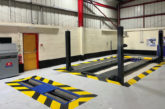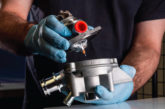
Having traced the journey of an apprentice in previous PMM columns, Gemma Westlake now turns her attention to the last stage: the End Point Assessment (EPA).
Hello and welcome! Hopefully, you have joined me as I have traced my way through the journey of an apprentice. We have looked at so many things: what an apprenticeship entails these days, what you may want to look for in a potential employee, how the new apprenticeship standards work, and much more. Last issue, we looked at the details of the apprenticeship programme, the job of the mentor, and what to expect as an employer on the journey to gain a qualified technician. Together we highlighted the type of tasks to be completed in gateways one and two before the learner can move onto the EPA (End Point Assessment). Now is the time to look at this final stage in more detail.
In the lead up to the EPA, it is essential that the employer, apprentice and mentor all agree that the nearly qualified technician is ready to take their final step (once this is agreed and signed for, the EPA is booked for three months’ time). In the run-up to this decision, as highlighted last issue, they will have completed several tasks to show their skill set, completed online gateway exams, practical assessments and professional discussions, how these are recorded may vary according to the awarding body. The following information is shown on the awarding.imi.org.uk website:
Prior to taking their EPA, full-time apprentices will typically:
- Spend 36 months on the programme
- Complete a minimum of 20% off-the-job training
- Complete an F-Gas qualification
- Complete a Logbook, used to inform the Professional Discussion
- Achieve level two in English and maths, if not previously done so
So, to clarify, along with the previous requirements the learner also needs to achieve their F Gas qualification, and English and maths at a level two (or equivalent) or above. The EPA is always carried out at an approved EPA assessment centre and has three elements to it: an online exam, practical assessments, and a professional discussion.
The online exam needs to be passed before the skills test/practical assessments can be completed. The practical assessment spans two days; it generally includes an array of skills from removal and refitting of bolts through diagnostics processes, to handling fluids and carrying out repairs. All the information is available through the IMI awarding website, but we can look at this in more detail in our next issue. The professional discussion will be held within one week of completion of these tasks and will focus on the processes involved in the tasks.
If you do have an apprentice on this journey, it is worth remembering that this can be a worrying and stressful time for them. At the college, we see young people experiencing these feelings on a daily basis, and although part of the mentor’s job is to help put the learner at ease, there is no comparison to a supportive and encouraging work environment. If someone is supported and given a little confidence, they will stand a much higher chance of achieving success.
I’m sure you have experienced different working environments as I have; there have been places that lack support and guidance. However, overall, I have been lucky enough to work in some great places where my workplace mentors have been encouraging and given fantastic guidance; these people have made such a positive difference to how I have worked.
A learner needs to feel comfortable to ask questions to ensure that they are constantly learning, while being encouraged to learn autonomously. It can be quite an art!
Next issue, we will be looking into the EPA practical assessments in more detail. Until then, take care!









